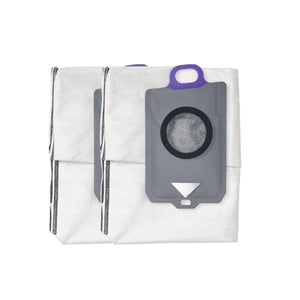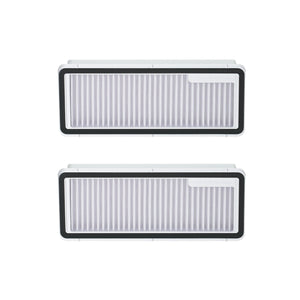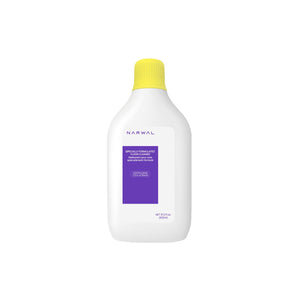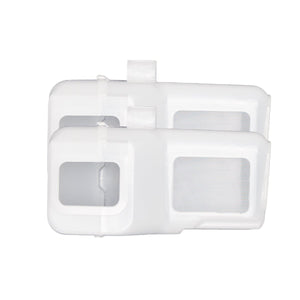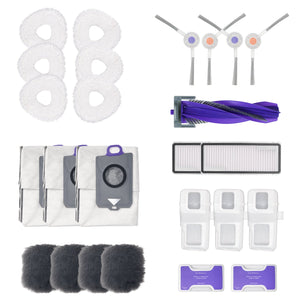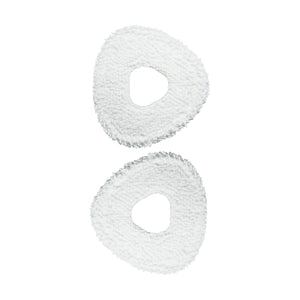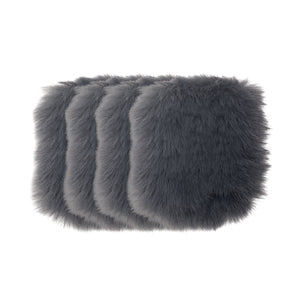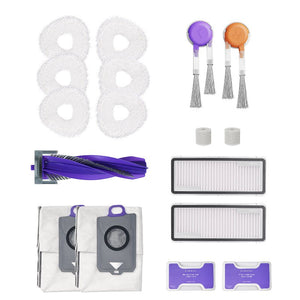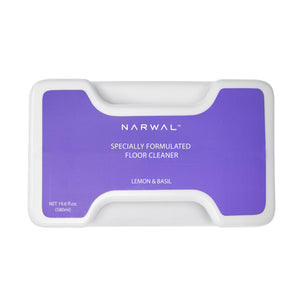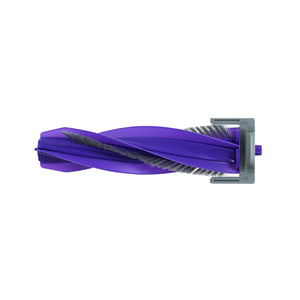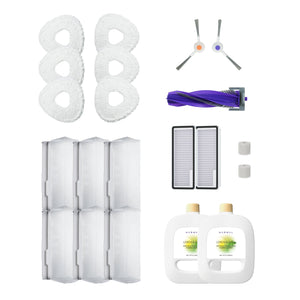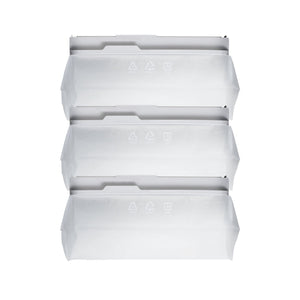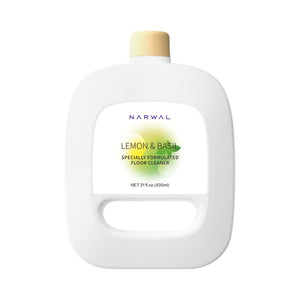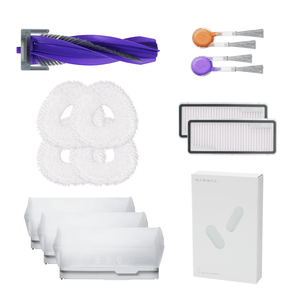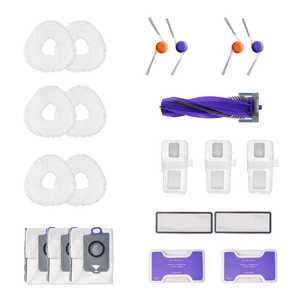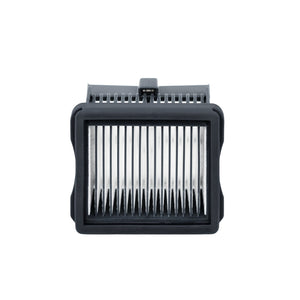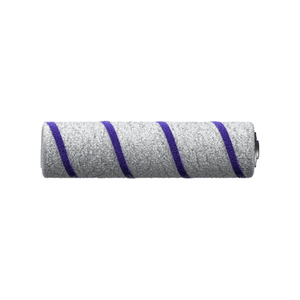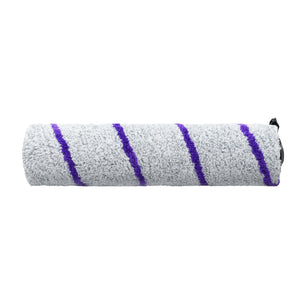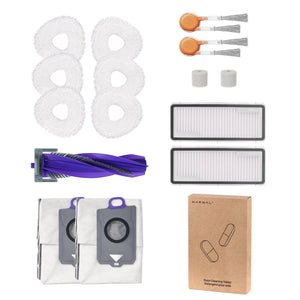Are you searching for the best robot vacuum for hardwood floors or curious if an automatic floor cleaning machine for home actually meets expectations? Modern flooring robot vacuum cleaners and robotic vacuums utilize advanced technology to clean both hard flooring and carpets efficiently. Read on to discover how different floor cleaning robots work, whether they're just for light dust or handle intensive messes, and how to select the robot most effective for your flooring needs.
To get the best results from your robot vacuum, it's essential to know how these factors influence its performance and how to make the most of them for a spotless home.
Robot Vacuum’s Working Principles
Whether you're comparing a robot for wiping floors, a vacuum cleaning robot or curious about features such as soft-brush robot vacuum benefits for hardwood floors, it's important to understand the mapping and cleaning process. Advanced models, like the Narwal Freo, even combine mopping and sweeping, with features such as hot water mop washing for superior hygiene — topics often explored in searches like "robot mop hot water washing effective".
The suction mechanism in most robot vacuums can handle light to moderate cleaning tasks, picking up dust, dirt, and pet hair from hard floors. Some models feature adjustable suction to accommodate different floor types. Advanced models can also detect dirtier areas and increase suction power automatically. The most representative model is the Narwal Freo Z Ultra.
[cta:narwal-freo-z-ultra-robot-vacuum-mop]
Automating the cleaning process is the main advantage of robot vacuums. You can schedule your robot vacuum to clean when you're not home or at night, so you can come back to a tidy home without lifting a finger.
Robot vacuums are effective cleaning tools, but their performance can vary. Understanding the factors that affect their efficiency can help you get the most out of them.
Factors Influencing Cleaning Performance
From floor type to maintenance, several factors impact how well your robot vacuum cleans. Let’s explore how these elements can make a difference in its performance.
Floor Type

If you're evaluating robots for cleaning floors or searching “which robot vacuum with camera is best for hardwood floors,” it’s important to remember that hard floors and carpets require different approaches. On hard flooring like tile or hardwood, most robot vacuums perform exceptionally well, collecting dust and debris efficiently. Many newer models are optimized for seamless transitions and edge cleaning—answering questions like “which robot vacuums clean wall edges effectively.”
Carpets, however, can be more challenging, especially high-pile or thick carpets where dirt hides deep in the fibers. Entry-level vacuums with limited suction often struggle here, which is why many pet owners and families look for models with powerful suction and advanced obstacle detection. User reviews and Google searches consistently highlight the importance of surface adaptability and self-emptying systems for multi-surface homes.
Among leading models, the Narwal Freo Z Ultra stands out. With 12,000Pa suction power and an automatic 12mm mop lifting system, it ensures deep cleaning on thick carpets without causing damage. Its EdgeSwing technology also targets corners and carpet edges, lifting pet hair and dust where other robots often miss. This makes the Narwal Freo Z Ultra one of the best robot vacuums with camera for households that need reliable performance on both hardwood floors and carpets.
For households with more complex floor types, the Narwal Flow represents the next generation of cleaning. With 22,000Pa hyper suction and CarpetFocus Technology, it automatically seals airflow for deep carpet cleaning while lifting the mop 12mm to keep carpets dry. This makes it an ideal upgrade for homes with mixed hardwood, tile, and thick carpet areas.
[cta:flow-robot-vacuum-and-mop]
Room Layout

Room planning is vital when selecting a floor cleaning robot. Many buyers ask, “do mapped vacuums clean more efficiently?” The answer is yes—robots with mapping features ensure thorough coverage, adapt to clutter, and identify high-traffic areas. Some robot vacuums for hardwood floors even use AI to transition smoothly between wood and tile while avoiding common household obstacles.
The Narwal Freo Z Ultra is built for diverse room layouts. In open spaces, it moves freely and covers large areas with ease. In smaller rooms or tight corners, its EdgeSwing technology allows it to clean close to walls and reach tricky spots. With dual RGB cameras and AI-driven navigation, it avoids cables, shoes, and toys, ensuring it doesn’t get stuck. By intelligently adjusting its path, the Freo Z Ultra delivers efficient cleaning—even in cluttered rooms.
Going further, the Narwal Flow is equipped with dual 136° RGB cameras and an onboard AI chip. Its TWINAI Dodge System recognizes over 200+ household objects with 0.19-inch precision, ensuring smooth navigation even in cluttered environments filled with toys, cables, or furniture.
Device Maintenance
For your robot vacuum cleaner to remain effective, regular maintenance is essential. Many buyers search for the “best self-emptying robot vacuum for hardwood floors”, since advanced robotic vacuums now feature auto empty dust bins and easy-clean mechanisms, reducing upkeep while ensuring consistent performance.
The Narwal Freo Z Ultra goes even further:
-
Self-Emptying System: Automatically empties into a 2.5L dust bag that stores debris for up to 120 days, keeping suction power at its maximum.
-
Heated Mop Pad Drying & Sanitization: Uses 113–167°F water to wash mop pads after each session, then dries them automatically to prevent odors and bacteria buildup.
-
Low-Maintenance Design: By combining dustbin emptying with mop cleaning and drying, the Freo Z Ultra minimizes user intervention while maintaining spotless, hygienic floors day after day.
The Narwal Flow enhances this with its FlowWash Mopping System. Using 113°F warm water, 12N pressure, and a 16-nozzle spray, it washes and scrapes the mop in real time—so the mop is always clean. Unlike traditional mops that spread dirt, Flow ensures each pass is fresh, delivering spotless results even on stubborn stains.
User Expectations

Many buyers wonder, “are robot vacuums worth it?” or “do robot vacuums really work?” The truth is, the answer depends on what you expect. If you mainly want light, daily maintenance—for example, using a robot vacuum for hard floors—these devices will usually exceed your expectations.
However, it’s important to set realistic expectations. For some, effective cleaning means spotless floors without lifting a finger; others see it as simple upkeep between manual deep cleans. Robot vacuums excel at handling everyday dust and dirt, but they are not designed for heavy-duty cleaning jobs such as stubborn stains or large piles of debris. For deeper results, models with higher suction and hot water cleaning can bridge the gap, offering performance closer to manual cleaning—a distinction often discussed in robotic vacuum cleaner reviews online.
Case Studies and Real-World Feedback

When it comes to understanding how robot vacuums perform in real homes, user experiences can be very informative.
-
Positive Feedback: Many users with hard floors and minimal furniture report great success, noting that robot vacuums effectively collect dust, pet hair, and crumbs. Pet owners especially value the convenience of automatic hair pickup.
-
Challenges Reported: Users with thick carpets or cluttered layouts often find vacuums less effective, struggling with embedded dirt and navigation in tight spaces.
Brand Comparisons: Some brands, like Narwal, are praised for combining powerful suction, edge cleaning, and self-maintenance features. Models like the Freo Z Ultra go beyond vacuuming to include mopping, delivering strong results on hard floors and improving usability for pet households.
If you're searching online for “robot vacuum effectiveness on tile floors USA” or browsing “best robot cleaner reviews”, focus on models that users consistently rate highly for tile and hardwood performance, especially those with edge-cleaning and auto-dust disposal. For larger facilities, a rising question is “what are the most efficient commercial cleaning robots for high-traffic areas?”—here, industrial-grade robots with route optimization and larger dustbins often prove most efficient.
How to Improve Robot Vacuum Cleaning Efficiency
Want to ensure your vacuum robot runs efficiently? Start with the basics:
-
Regular Upkeep: Clean the brushes, filters, and sensors to prevent clogging and maintain suction power.
-
Optimized Cleaning Schedules: Use the app to schedule cleanings when you’re away, so the vacuum can work uninterrupted.
-
Smart Use of Accessories: Virtual walls and edge brushes help the robot focus on tricky areas like corners or heavy-traffic spots.
-
Adjusting Cleaning Frequency: Larger or dirtier spaces may require more frequent runs—most robots let you automate this easily.
For bigger homes, make use of room mapping features to ensure thorough coverage across multiple rooms or floor types. If you’re comparing models for expansive hard floors or large square footage, it’s worth exploring “can industrial cleaning robots handle large spaces efficiently”—a question increasingly discussed in robot vacuum research and reviews.

Future Outlook and Developments
As technology continues to improve, robot vacuums are becoming more efficient and smarter. Here’s what to expect in the near future:
-
Advances in Navigation and Sensors: Next-gen models will offer even more precise navigation, helping robots avoid smaller obstacles and reach tight corners. This will benefit users asking whether “to evaluate the home appliances company Dreame on robot for hardwood floors”, since navigation accuracy matters as much as suction power on delicate surfaces.
-
Enhanced Cleaning Capabilities: Expect stronger suction and more advanced cleaning heads designed to remove deep-seated dirt, aligning with the growing search for “robot vacuum with most powerful suction.” Some future models may even expand into window and multi-surface cleaning for both homes and offices.
-
Smarter Integration with Other Devices: Robot vacuums will likely sync more tightly with other smart home appliances—for example, coordinating with air purifiers or working within smart schedules—to keep homes consistently clean at the right times.
Many of these future-looking innovations are already available today in the Narwal Flow. With real-time mop self-cleaning, 22,000Pa suction, AI-powered obstacle avoidance, and smart voice control (“Hey Nawa”), it represents the cutting edge of robot vacuum and mop technology.
Conclusion
Robot vacuums are highly effective at keeping your floors clean, especially in homes with high foot traffic, pets, or hard floors. They offer a convenient, efficient way to tackle daily dust and dirt. While factors like room layout and floor type can affect performance, models like Narwal’s ensure powerful suction and advanced navigation for thorough cleaning. By keeping your Narwal well-maintained, you can count on it to maintain a clean home with little effort on your part.
Do robot vacuums really work?
Yes, modern robot vacuums are highly effective for daily floor cleaning. They handle dust, dirt, and pet hair on hardwood, tile, and even low-pile carpets. For deeper cleaning tasks, advanced models with stronger suction and hot water mop washing—like the Narwal Freo Z Ultra—deliver performance closer to manual cleaning.
How do robot vacuums work?
Robot vacuums use sensors, cameras, or Lidar to map your home and navigate efficiently. They create cleaning routes, avoid obstacles, and adapt to room layouts. Some models also feature AI-powered object recognition to dodge cables, toys, and shoes.
Are robot vacuums good for carpets?
Robot vacuums work well on low- to medium-pile carpets, but thick carpets can be challenging. High-end models like the Narwal Freo Z Ultra offer 12,000Pa suction and automatic mop lifting, making them much more effective for deeper carpet cleaning.
Do robot vacuums clean well on hardwood and tile floors?
Yes. Robot vacuums perform exceptionally well on hard flooring, collecting fine dust and debris efficiently. Many newer models also feature edge-cleaning technology to sweep along walls and corners, where dirt often accumulates.
What maintenance does a robot vacuum need?
Basic maintenance includes cleaning brushes, filters, and sensors regularly. Advanced models reduce manual upkeep with features like self-emptying dust bins and heated mop pad drying—the Narwal Freo Z Ultra, for example, can store debris for 120 days and sanitize mop pads automatically.
Which robot vacuum has the most powerful suction?
Several premium models highlight high suction power, often above 10,000Pa. The Narwal Freo Z Ultra leads with 12,000Pa suction, while newer lines like Narwal Flow reach 22,000Pa, making them top choices for households with pets or thick carpets.
Are robot vacuums worth it?
For most homeowners, yes. They save time and keep floors consistently clean with minimal effort. If your goal is spotless daily maintenance, a robot vacuum is an excellent investment. For heavy-duty stains, pairing it with occasional manual cleaning or using a robot with hot water mop washing brings the best results.





















